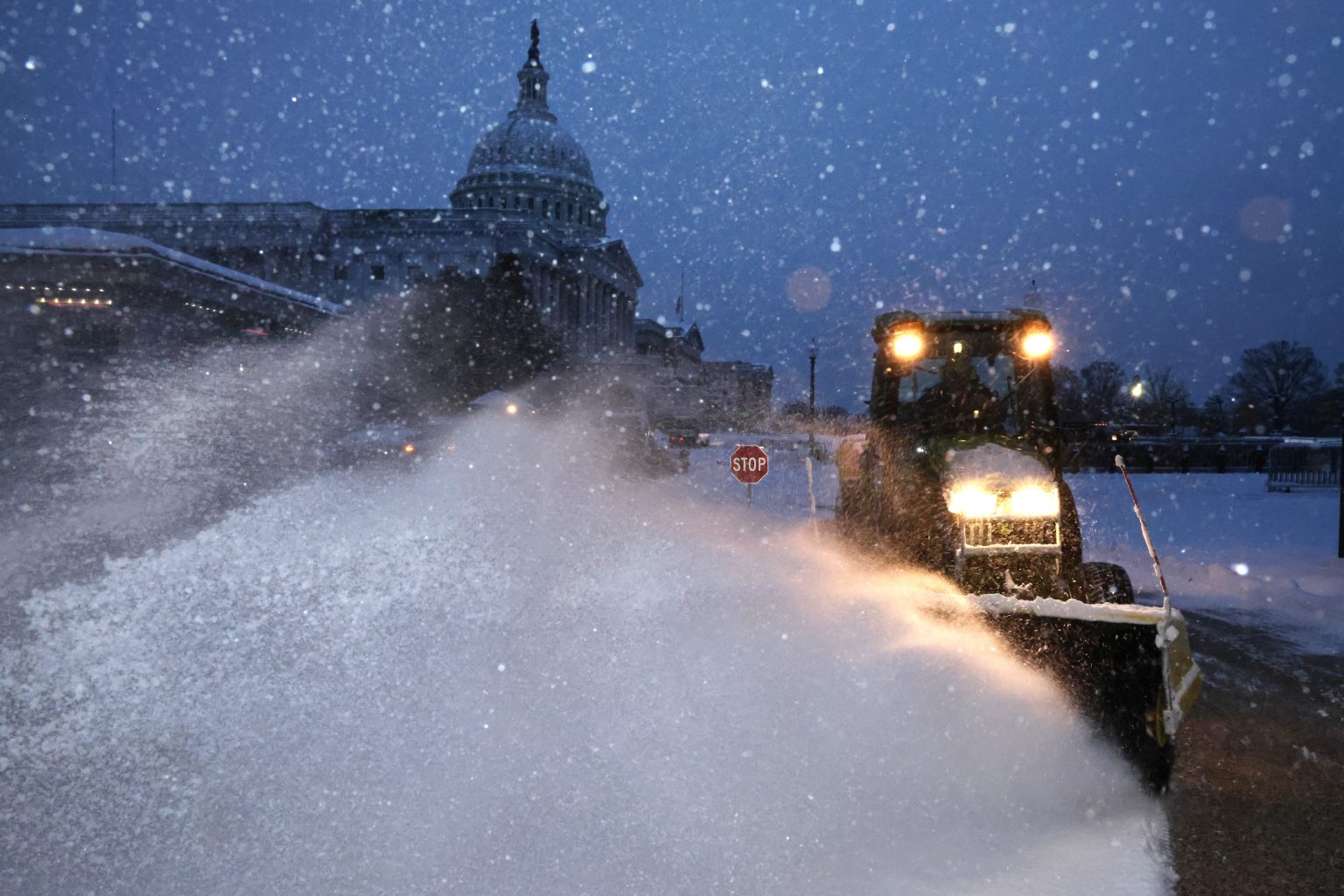A widespread winter storm impacted 26 states across the United States, prompting winter storm warnings from the National Weather Service (NWS) and causing travel disruptions and potential hazards. The storm, which began early Friday, brought heavy snow, sleet, and freezing rain to a large swathe of the country, stretching from Texas to Montana and eastward to the Atlantic coast. The NWS issued winter storm warnings when there’s a high probability (at least 80%) of significant winter weather conditions, including substantial snowfall, sleet, and ice accumulations. These conditions can significantly impact travel, making roads dangerous and leading to commute disruptions. The NWS advised delaying travel in some affected areas.
The storm’s impact varied across the affected states. Montana’s mountainous regions, including the Bears Paw, Highwood, Little Belt, and Snowy Mountains, experienced the heaviest snowfall, with accumulations of 7 to 14 inches possible. Southern states like Texas, Arkansas, Louisiana, Mississippi, Alabama, Georgia, and South Carolina also faced significant snowfall and ice accumulations. Tennessee and Kentucky were entirely under winter storm warnings, while northern portions of Louisiana, Alabama, Mississippi, Georgia, and South Carolina faced similar warnings. Further north, winter weather advisories were in effect for large portions of West Virginia, Ohio, Indiana, and Michigan.
Beyond the immediate snowfall, the storm’s impact extended to the potential for hazardous driving conditions due to snow and ice accumulation on roadways. The freezing temperatures accompanying the storm also posed health risks, particularly for vulnerable populations like infants and senior citizens. The NWS emphasized the importance of taking precautions during winter storms, including avoiding unnecessary travel, dressing warmly in layers, and ensuring access to heating.
The NWS warnings encompassed a significant geographical area. As of Friday morning, winter storm warnings were in effect for Texas, Oklahoma, Kansas, Louisiana, Arkansas, Mississippi, Alabama, Georgia, South Carolina, North Carolina, Virginia, Kentucky, Indiana, Illinois, Tennessee, Missouri, and Montana. Winter weather advisories, indicating less severe but still impactful winter weather, were issued for Ohio, West Virginia, Michigan, Washington, New Mexico, Colorado, Oregon, Pennsylvania, and Maryland. Texas experienced a mix of winter storm warnings and winter weather advisories, with the southern part of the state largely spared from the most severe conditions.
Meteorologists and weather services closely tracked and reported on the storm’s progress. Social media platforms like X (formerly Twitter) served as channels for real-time updates and forecasts. Meteorologist Chris Smith highlighted the heavy snow impacting areas from Oklahoma to Arkansas. Stephen McCloud forecasted significant snowfall, potentially exceeding initial predictions, for Middle Tennessee. AccuWeather meteorologist Heather Zehr provided snowfall estimates for major cities like Dallas, Little Rock, and Nashville, anticipating accumulations ranging from 2 to 6 inches.
The duration of the winter storm warnings varied by state, with some warnings extending until Saturday afternoon. The NWS continued to monitor the storm’s development and provide updates to the public, emphasizing the importance of staying informed and taking appropriate safety measures. The widespread nature of the storm and its potential impact on travel and vulnerable populations underscored the seriousness of the weather event. The ongoing monitoring and reporting by meteorological services aimed to keep the public informed and minimize the storm’s disruptive effects.

